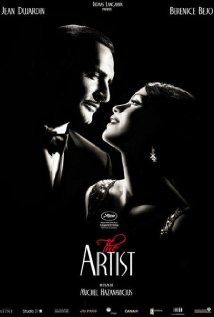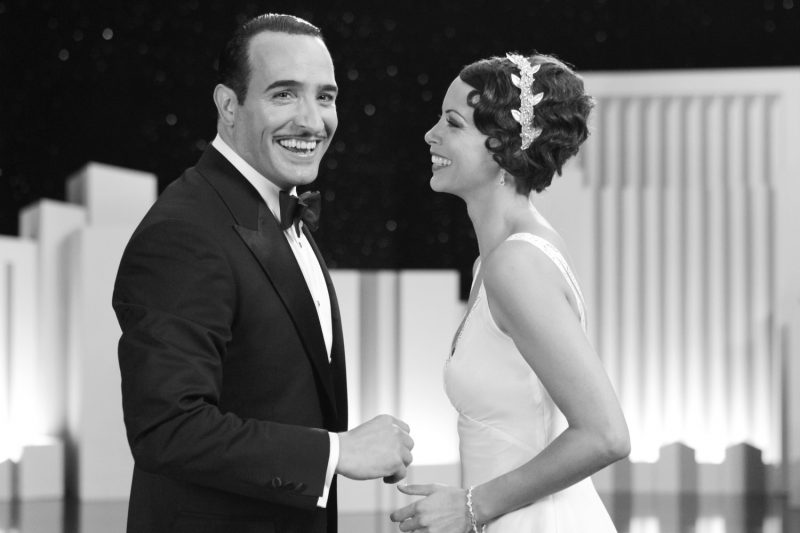
Earlier this year I noticed a bit of buzz regarding an upcoming movie that sounded intriguing but also extremely risky. The film—The Artist—is quite novel in that it’s a silent movie. Yep, in 2011 a film studio decided to take a chance on a quirky, fairly perilous venture and shoot a complete silent film. It’s not entirely as chancy as one might think because the movie itself isn’t just a standard silent movie but is essentially a silent movie about silent movies and that makes all the difference.
My main concern with the film was that it would just be presented as a gimmick and wouldn’t really work as a feature-length film. Instead it works wonderfully. It’s clear that every scene was thought out from the standpoint of how it would be viewed from this new perspective. The producers clearly understood that a huge number of viewers (and potential viewers) would not be able to simply forget that this is a silent movie. Instead they work that into the effort at every turn. The opening credits are presented much like films of the era—basic and muted. Even the effects used feel perfectly thought out. Key scenes that are supposed to be of actual films include slightly foggy edges and everything’s presented in standard old-style 4:3 resolution (no wide-screen here just like then). There’s no cheap graininess to convey age as it’s all supposed to be new. We, the audience, are the ones who traveled back in time.
Every shot looks flawless and it’s amazing how simply black-and-white shots take locations of today and perfectly make them appear as if they’re from the 1920’s and 1930’s. I also couldn’t help notice how essential the musical score was here. It makes you realize just how critical music must have been earlier on in film making’s history. It also didn’t escape my attention as to how quiet everyone had to be as you didn’t have a lot of continually loud noises to cover up the audience. You also had no choice but to keep your attention glued to the screen to make sure you knew what was going on and that should help too reduce distractions like cell phone use.
The story itself isn’t perfect but it’s wonderfully engaging, touching and fast-paced. You’ll laugh heartily in spots and tear up in others. Also noteworthy is both a mid-film sequence that I really worried might destroy the film (instead it was spot-on) and a pitch-perfect ending sequence that really brings it all home.
The cast is also worth mentioning. The stars are mainly unknown to American audiences and that’s both by design and essential to the telling of this story. Beyond them the film treats us with stars that seem also carefully selected to evoke an earlier age including Penelope Ann Miller, John Goodman, Ed Lauter, James Cromwell and even Malcolm McDowell. Most have smaller parts but each is critical to the story in their own way and so their selections here do wonders.
The best thing I can say about this experiment is that I’d like to see more silent films and that’s no small praise. The catch is that, as noted, it’s one thing to make a silent movie about silent movies (more or less) and another thing to make a great silent film entirely in its own right.



